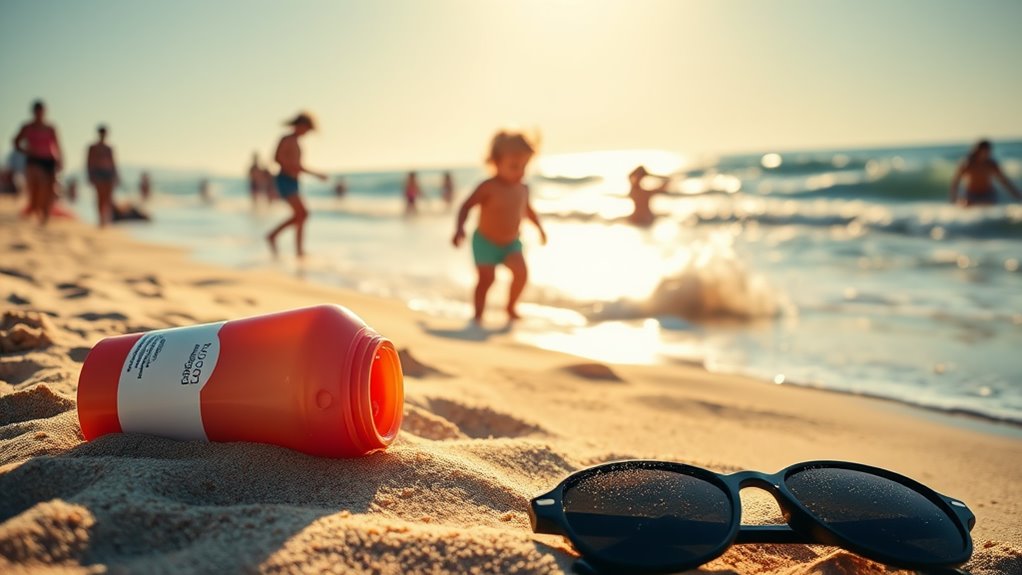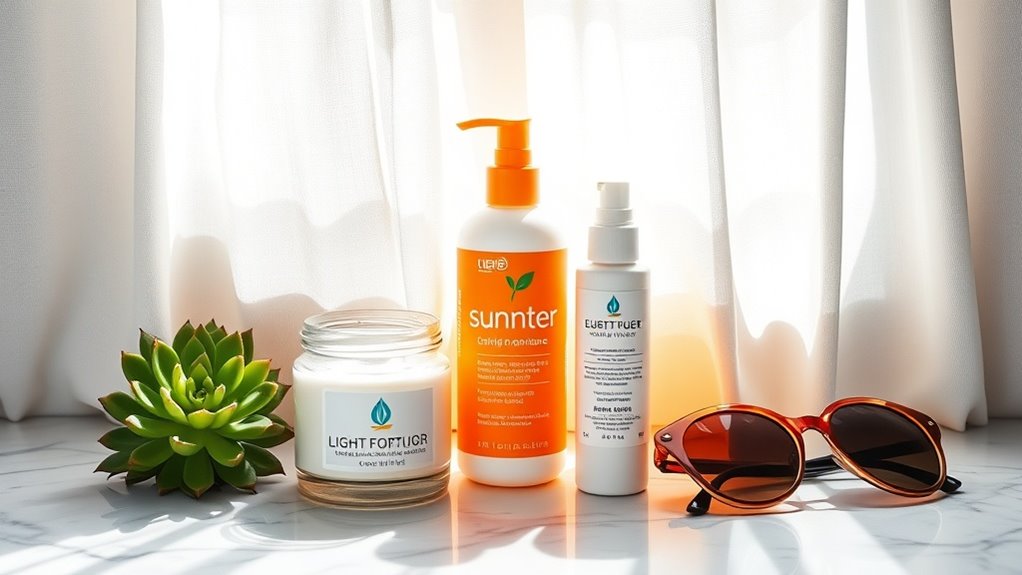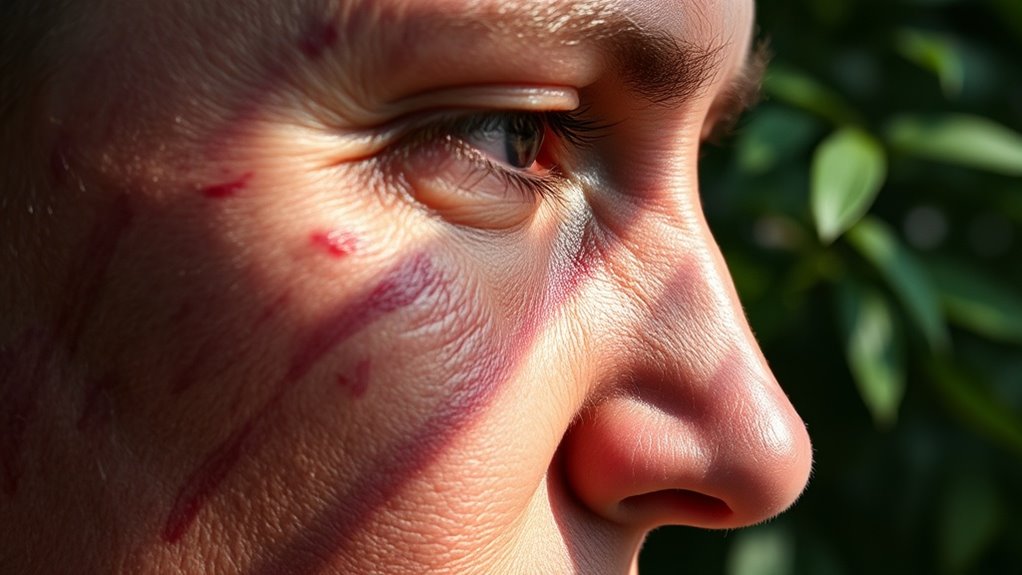The SPF Myth Everyone Believes (and Why It’s Dangerous)
Many people believe that slathering on SPF 50 sunscreen means they can spend hours in the sun without a care. However, this common misconception can lead you to underestimate the risks of skin damage. SPF primarily protects against UVB rays and offers only marginal benefits over SPF 30. As a result, you might find yourself exposed to harmful UVA rays, raising the stakes for skin cancer and premature aging. What should you know to stay truly protected?
Key Takeaways
- Many believe higher SPF allows for longer sun exposure, but it only marginally increases UVB protection.
- SPF ratings only indicate UVB protection, neglecting the harmful effects of UVA rays.
- Relying solely on SPF can create a false sense of security against sun damage.
- Most people apply only 25-50% of the recommended sunscreen amount, reducing its effectiveness.
- Environmental factors like sweat and water can diminish sunscreen efficacy, making reapplication crucial.
Understanding SPF: What It Really Means
What does SPF really mean? SPF, or Sun Protection Factor, measures a sunscreen’s ability to shield your skin from ultraviolet (UV) radiation, specifically UVB rays.
An SPF of 30 implies it blocks approximately 97% of UVB rays, while SPF 50 blocks about 98%.
However, this doesn’t mean you can stay in the sun longer; it’s essential to reapply every two hours and after sweating or swimming.
SPF facts show that higher numbers provide marginally better protection, but no sunscreen offers complete defense. Additionally, combining sunscreen with other protective measures like clothing and seeking shade can enhance your overall safety against sun damage. Always combine sunscreen with other protective measures, like clothing and seeking shade, for maximum safety against sun damage.
The Common Misconceptions About SPF
How can something as simple as SPF lead to so many misconceptions?
Many believe that a higher SPF means they can stay in the sun longer without reapplying, but that’s not true. SPF only measures UVB protection, not UVA, which also contributes to skin damage.
You might think that applying sunscreen once is enough, but it needs reapplication every two hours or after swimming.
Some assume that SPF products are waterproof, but no sunscreen is entirely water-resistant.
Finally, many overlook the importance of using enough product; the average person applies only 25-50% of the recommended amount, reducing its effectiveness greatly. Additionally, broad-spectrum protection is crucial as it shields against both UVA and UVB rays, emphasizing the need for a comprehensive sun care approach.
The Dangers of Relying Solely on SPF
Relying solely on SPF for sun protection can lead to a false sense of security.
Many people believe that higher SPF numbers provide complete protection, but this isn’t true.
You might overlook other essential protective measures.
Consider these dangers:
- Inadequate Application: You mightn’t apply enough sunscreen or forget to reapply, diminishing its effectiveness.
- Limited Spectrum: SPF only measures UVB protection, neglecting UVA rays, which can also cause skin damage and cancer.
- Environmental Factors: Factors like water, sweat, or sand can reduce sunscreen efficacy, leaving your skin vulnerable.
Additionally, it’s important to note that SPF numbers do not directly correlate with the amount of time you can spend in the sun without risk.
Diversifying your sun protection strategy is essential for ideal safety.
How to Choose the Right Sunscreen
When selecting the right sunscreen, you might wonder which factors are most important for effective protection.
Look for broad-spectrum labels, indicating protection against both UVA and UVB rays.
Choose an SPF of at least 30 for adequate defense.
The formulation matters too; opt for water-resistant options if you’ll swim or sweat.
Check for ingredients like zinc oxide or avobenzone, which provide physical and chemical protection, respectively.
Finally, consider your skin type—if you have sensitive skin, a fragrance-free or mineral-based sunscreen might be best.
Always apply generously and reapply every two hours for maximum effectiveness. Additionally, remember that daily sunscreen application is crucial for preventing premature aging and protecting your skin from harmful UV rays.
Essential Tips for Effective Sun Protection
What steps can you take to guarantee effective sun protection?
It’s vital to adopt a proactive approach.
Here are three essential tips:
-
Apply Generously: Use at least an ounce of broad-spectrum sunscreen with an SPF of 30 or higher, and apply it 15 minutes before sun exposure. Reapply every two hours, or more frequently if swimming or sweating.
-
Seek Shade: Whenever possible, stay in the shade, especially during peak sun hours between 10 a.m. and 4 p.m.
-
Wear Protective Clothing: Opt for long sleeves, wide-brimmed hats, and UV-blocking sunglasses to minimize skin exposure. Additionally, remember that sufficient sun protection is crucial for preventing long-term skin damage and maintaining overall skin health.





